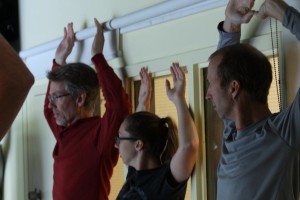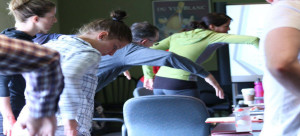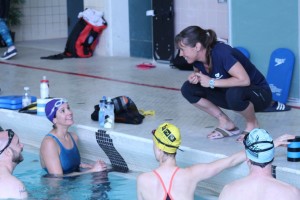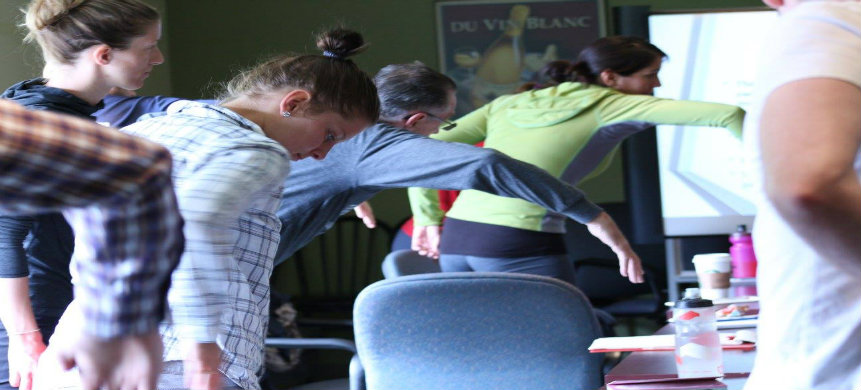Written by a CLPT Swim Clinic Participant
- The right stroke is the one that is right for YOU. We all have different body proportions and flexibility. Although the essential pieces of the stroke are the same for all of us, the ideal amount of extension under the water and stroke rate, for example, may be different for you versus someone who is taller than you and more flexible than you
- Shoulder flexibility is key to a strong and powerful stroke. Wall angels and pec/lat stretches can help release tension and increase your flexibility.

- “Shoulder above elbow; elbow above wrist; wrist above hand” Follow this rule throughout arm entry, catch, pull and recovery. This will maintain your grip on the water, help with maintaining a high elbow and optimize the surface area you have available for your pull.

- Practicing the motions involved in body roll, shoulder to chin, and extension through the lats while standing on dry land really drills home what the motion should feel like in the water. Try bending over and making the swimming motions ‘flat’ – then do it with body roll and extension. Rolling is far easier on the shoulders, which is also important for injury prevention.
- Catching and pulling has its own rhythm. Understanding that the most powerful portion of your stroke should happen during the pull and the “push” or finish portion of the stroke makes the rhythm easier to grasp. Relax through the recovery, relax during entry, and relax during catch…then PULL from forearm vertical and PUSH from the hip back.
- Swimming downhill in a tube, and doing ballet in a bucket are actually helpful things to visualize to maintain a high body position in the water and a relaxed kick.

- Breathing is good for you. It’s easier to do when your body position is correct. You’ll know it is when you’re not fighting the water anymore.
- Stroke rate is highly technical. Get Al to explain it to you if you’ve already mastered #1 – 7.
- Pool toys have a purpose. Understanding why they are part of your workout helps you get through a 2000m band set – and maximize the effort. Paddles help to build swim specific strength and also help with a proper entry and catch. Using a pull buoy allows practice rotating from the core and takes the demand off your legs for propulsion. Fins are useful for building leg, hip and core strength and also for helping to keep legs high in the water and feeling what a high body position feels like and for taking stress off the legs when used in a relaxed way in a recovery swim. Bands are used to build swim specific strength, increase turnover and maximize your catch. A snorkel can be used to work on your swim stroke without having to worry about breathing, which can be challenging on it’s own for some swimmers!
- Performance anxiety happens in the pool, especially when a camera is following you under water! But the lessons from that point of view are invaluable for seeing that you aren’t really doing what you think you are doing.


A few more that don’t quite make the top ten, but were part of the experience, as well.
Take learning swim technique seriously, but not so much that you lose your perspective or ability to enjoy it. Some days are good. Some aren’t. Accept the tough days for showing you where you need more work, and use the strong days to do that work.
Size matters, but size is relative. A larger room and more lanes can make the same 25 yard distance you are accustomed to look much bigger, causing you to second guess your entire winter’s worth of training. Regardless of what length of pool you are swimming in…you are doing the work, and that’s what counts.
Transitioning to open water swimming is an entirely different set of circumstances, but the basic technique and fitness are the same. It comes back to remembering the parts of the stroke and taking the time to relax and do them properly.
Nobody really looks good with goggles and a swim cap, so just keep your head down and focus on moving forward. The best view you can have is the bubbles from the feet of the person you are drafting behind.



